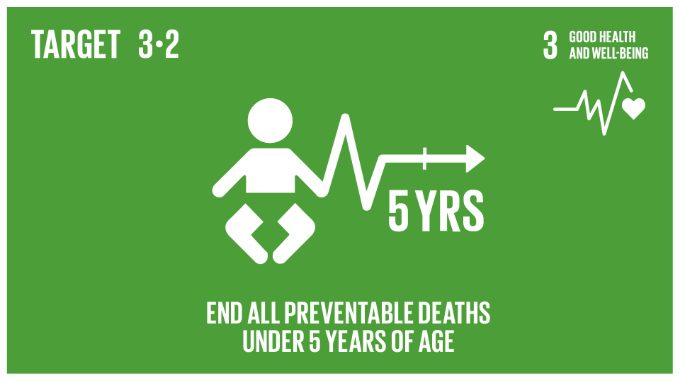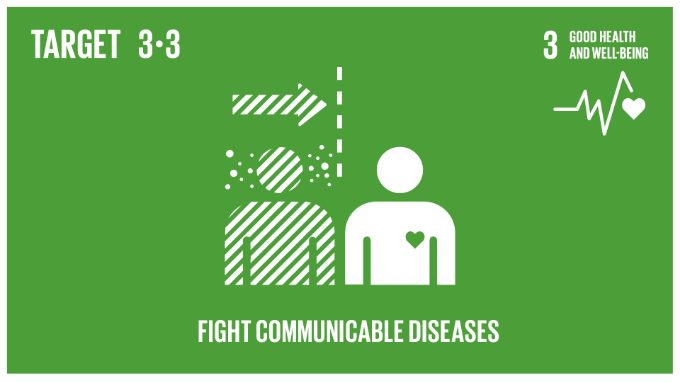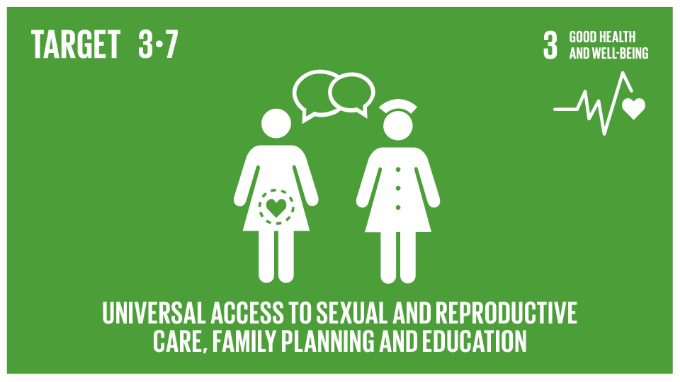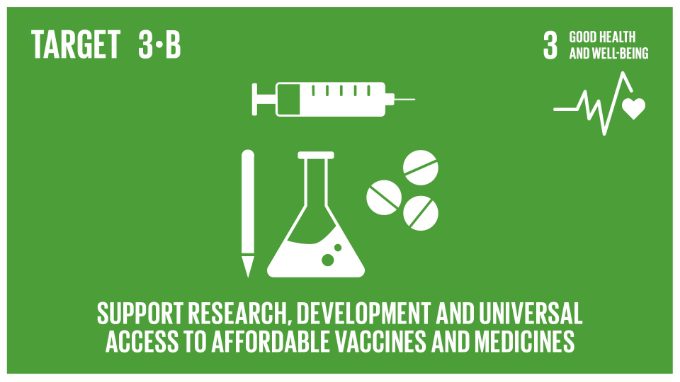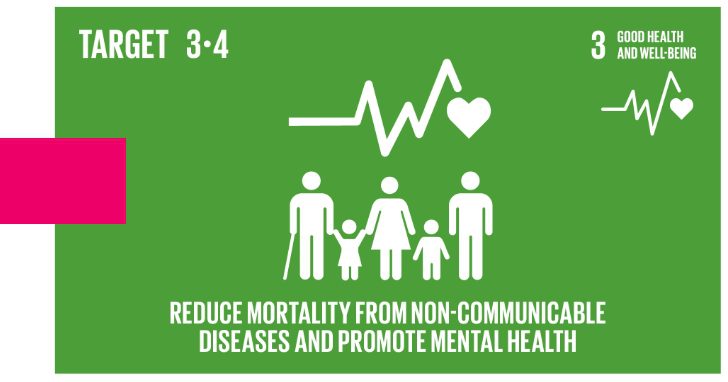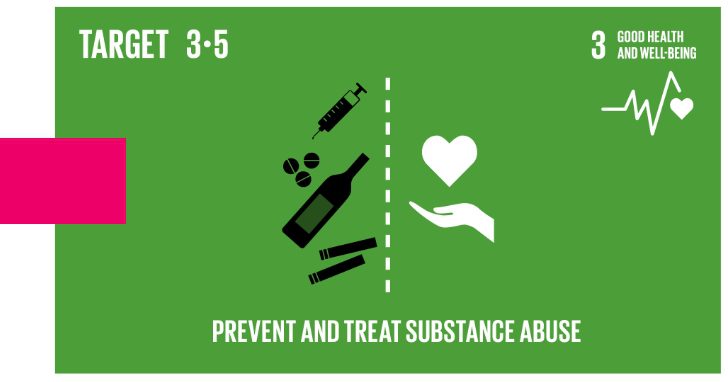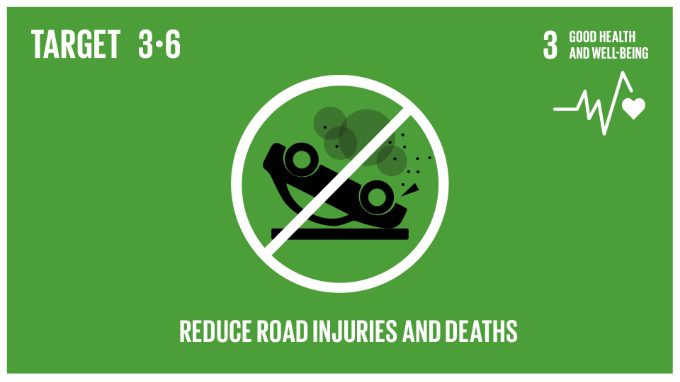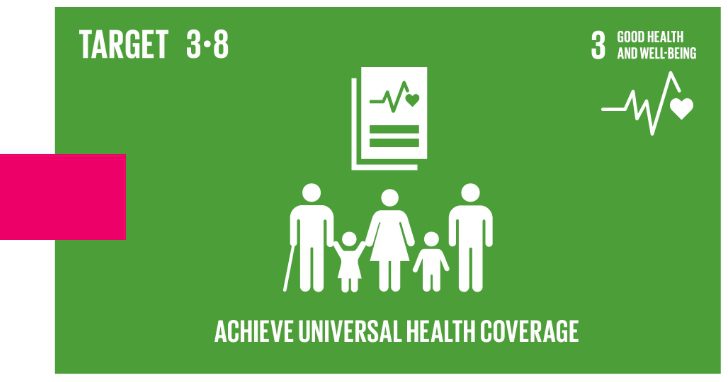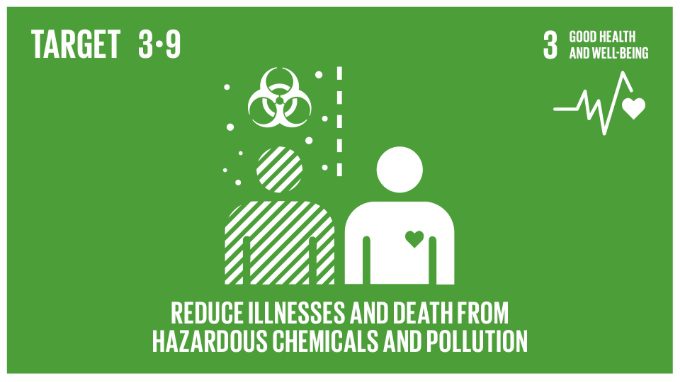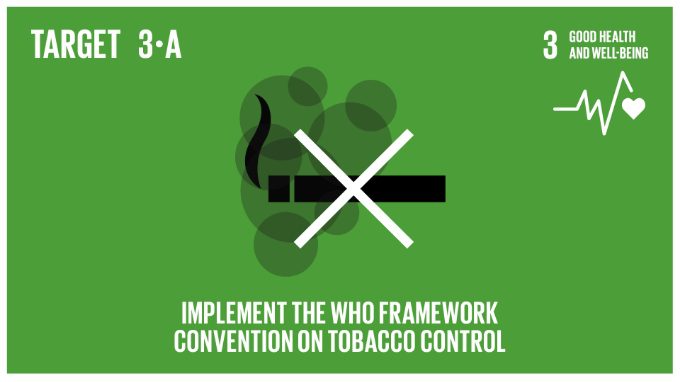Overview:
Over the last 15 years, the number of childhood deaths has been cut in half. This proves that it is possible to win the fight against almost every disease. Still, we are spending an astonishing amount of money and resources on treating illnesses that are surprisingly easy to prevent. The new goal for worldwide Good Health promotes healthy lifestyles, preventive measures and modern, efficient healthcare for everyone.

International Progress 2023:
The pandemic and other ongoing crises are hindering progress in achieving SDG3, exacerbating existing health inequalities and threatening progress towards universal health coverage. As a result, 68 million children are known to be un- or under-vaccinated as of 2022 from TB and malaria.
This has been particularly challenging in low- and middle-income countries, where health systems were already under-resourced before the pandemic. The pandemic has also highlighted the need for stronger global health security systems to prevent and respond to future pandemics. Overcoming these setbacks and dealing with longstanding shortcomings in health-care provision requires an urgent strengthening of health systems.
Targets —
-

Target 3.1
The global maternal mortality ratio decreased only from 227 maternal deaths per 100,000 live births in 2015 to 223 in 2020, still over three times higher than the target of 70 maternal deaths by 2030. This means that almost 800 women are still dying from preventable causes related to pregnancy and childbirth every day. Almost 95% of these deaths occurred in low and lower-middle-income countries. The global average annual rate of reduction was only 0.04% in the period of 2016-2020, significantly lower than the 2.7% rate in 2000-2015. To meet the target, the annual rate of reduction needs to increase to 11% between 2020 and 2030. In 2022, 86% of global births were attended by skilled health personnel, which increased from 81% in 2015, but coverage in sub-Saharan Africa was only 70%.
-

Target 3.2
Between 2015 and 2021, the global under-5 mortality rate fell by 12% from 43 deaths per 1,000 live births in 2015 to 38 deaths and the global neonatal mortality rate fell from 20 to 18 deaths. In 2021, 5 million children died before reaching their fifth birthday—down from 6.1 million in 2015. Of 200 countries and areas analysed, only 54 countries are not on track to meet the target of lower than 25 deaths per 1,000 live births. Among these countries, 37 countries will need to more than double their current rate of progress or reverse a recent increasing trend to achieve the SDG target by 2030.
-

Target 3.3
Progress towards the SDG target of ending communicable diseases by 2030 remains off course even though progress varies across different diseases. a) Tremendous progress has, for instance, been made in reducing new HIV infections, particularly in the highest-burden regions: the estimated 1.5 million new HIV infections in 2021 was almost one-third fewer than in 2010. This is however still far from the 2025 target of fewer than 370,000 new HIV infections as agreed by the UN General Assembly in 2021. b) In 2021, an estimated 1.6 million people died from TB and 10.6 million people fell ill with TB, an increase from 10.1 million in 2020. The TB incidence rate rose by 3.6% between 2020 and 2021, reversing declines of about 2% per year for most of the previous two decades. Between 2015 and 2021, the net reductions in TB incidence and TB death were 10% and 5.9%, respectively, only one-fifth and one-tenth of the way to the 2025 milestone of WHO’s End TB Strategy. c) There were an estimated 247 million malaria cases globally in 2021, compared to 224 million in 2015. There were an estimated 619,000 malaria deaths globally in 2021 compared to 625,000 in 2020 and 568,000 in 2019. d) Despite significant disruptions caused by COVID-19, the global number of people requiring treatment and care for neglected tropical diseases (NTDs) declined from 1.8 billion in 2015 to 1.65 billion in 2021. Notably, in LDCs, 47% of the total population required NTD treatment and care in 2021, down from 79% in 2010.
-

Target 3.7
The proportion of women of reproductive age (15-49 years) who have their need for family planning satisfied with modern contraceptive methods has been increasing slightly from 76.5% in 2015 to 77.6% in 2023 and is projected to reach 78.2% by 2030 – strong progress but still not sufficient to meet the target of ensuring universal access to sexual and reproductive health-care services by 2030. Sub-Saharan Africa has witnessed the largest increase from 51.6% to 57.4% for this period and is expected to increase to 62.1% by 2030.
-

Target 3.b
The percentage of children who received three doses of the vaccine against diphtheria, tetanus and pertussis (DTP3) fell 5 percentage points between 2019 and 2021 to 81%, causing the largest sustained decline in childhood vaccinations in approximately 30 years. As a result, 25 million children missed out on one or more doses of DTP through routine immunisation services in 2021 alone. This is 2 million more than those who missed out in 2020 and 6 million more than in 2019. The global coverage of the last dose of human papillomavirus (HPV) vaccine, targeting 9-14 years old girls to prevent cervical cancer, was only 12% in 2021.
-

Target 3.c
A 2020 study shows that the projected global shortage of health workers by 2030 has reduced from 18 million to 10 million. Despite the tremendous increase in health workforce globally, regions with the highest burden of disease continue to have the lowest proportion of health workforce to deliver health services. According to data from 2014-2021, sub-Saharan Africa continues to have the lowest health worker density, with only 2.3 medical doctors and 12.6 nursing and midwifery personnel per 10,000 population. In contrast, Europe has the highest density of 39.4 doctors per 10,000 population, while North America has 152 nursing and midwifery personnel per 10,000 population.
Ireland’s
Progress 2023:
Obesity levels are increasing, and the percentage of surviving infants who received 2 WHO-recommended vaccines is stagnating or increasing at less than 50% of required rate in order to reach 100% by 2030. Access to safe abortion access is lacking, despite the 2018 repeal of the 8th amendment to the constitution, as the number of Irish people who are still having to travel to the UK to access abortion healthcare services is “unacceptable” (IFPA, 2023). Ireland has the worst healthcare for transgender people in the EU, and is the only EU country to still not provide government-assisted fertility treatment.
In Ireland, the number of premature deaths attributable to air pollution is estimated at 1,300 people (EPA, HSE). Health insurance premiums are very high in comparison to other EU countries. About one in eight Irish people smoke cigarettes daily, but are less inclined to light up than many of their European counterparts. Between 1998 and 2018 there was a very large decrease in the percentage of girls and boys who reported being current smokers. More students report using e-cigarettes in 2019 than in 2015, and the use of e-cigarettes among students is now more common than cigarette smoking. Usage of e-cigarettes is higher in more deprived areas (7%), than in more affluent areas (4%). In 2015 there were estimated to be approximately 5,900 deaths attributable to smoking and exposure to second-hand smoke (SHS); an increase of approximately 2% since 2011. Lower socio-economic groups (SES) experience higher levels of alcohol harm than more socially advantaged groups with the same level of consumption, with higher rates of alcohol-related morbidity and mortality in lower SES groups (the ‘alcohol harm paradox.’ Individuals with a lower socio-economic status (SES) are more negatively affected by the effects of alcohol, while adolescents with lower SES have been found to experience significantly higher patterns of heavy episodic drinking. The male suicide rate is higher than that of females (CSO, 2022). Ireland also has high rates of emigration among healthcare workers .
Targets —
-

By 2030, reduce the global maternal mortality ratio to less than 70 per 100,000 live births.
CSO data
3.1.1 The maternal death rate in Ireland in 2019 was zero.
3.1.2 All births in Ireland in 2015 were attended by skilled health personnel.
3.1.1
By 2030, reduce the global maternal mortality ratio to less than 70 per 100,000 live births.
3.1.2
Proportion of births attended by skilled health personnel
-

By 2030, end preventable deaths of newborns and children under 5 years of age, with all countries aiming to reduce neonatal mortality to at least as low as 12 per 1,000 live births and under-5 mortality to at least as low as 25 per 1,000 live births.
CSO data
3.2.1 The mortality rate for under-fives in Ireland nearly halved between 2008 and 2018, falling from a rate of 111.2 to 64.6 per 100,000 population.
3.2.2 The neonatal mortality rate was 2.3 in 2017.
3.2.1
Under-five mortality rate
By 2030, end preventable deaths of newborns and children under 5 years of age, with all countries aiming to reduce neonatal mortality to at least as low as 12 per 1,000 live births and under-5 mortality to at least as low as 25 per 1,000 live births.3.2.2
Neonatal mortality rate
-

By 2030, end the epidemics of AIDS, tuberculosis, malaria and neglected tropical diseases and combat hepatitis, water-borne diseases and other communicable diseases.
CSO data
Claim: Achieving
3.3.1 There were 523 people diagnosed with HIV in Ireland 2018.
3.3.2 There were 267 TB notifications in Ireland in 2019.
3.3.3 There were 81 cases of malaria in 2019.
3.3.4 The number of cases of Hepatitis B in Ireland dropped from 639 to 546 between 2010 and 2019.
3.3.5 There were zero people who required an intervention against a neglected tropical diseases in 2018.
The definition of ‘epidemic’ is occurring widely in a community at a particular time. The CSO does not disaggregate by community so it’s not possible to see the communities suffering most from these diseases. We have not fully eradicated them.
3.3.1
Number of new HIV infections per 1,000 uninfected population by sex, age and key populations By 2030, end the epidemics of AIDS, tuberculosis, malaria and neglected tropical diseases and combat hepatitis, water-borne diseases and other communicable diseases.
3.3.2
Tuberculosis incidence per 100,000 population,
By 2030, end the epidemics of AIDS, tuberculosis, malaria and neglected tropical diseases and combat hepatitis, water-borne diseases and other communicable diseases.3.3.3
Malaria incidence per 1,000 population, By 2030, end the epidemics of AIDS, tuberculosis, malaria and neglected tropical diseases and combat hepatitis, water-borne diseases and other communicable diseases.
3.3.4
Hepatitis B incidence per 100,000 population,
By 2030, end the epidemics of AIDS, tuberculosis, malaria and neglected tropical diseases and combat hepatitis, water-borne diseases and other communicable diseases.3.3.5
Number of people requiring interventions against neglected tropical diseases 3.4 .By 2030, reduce by one third premature mortality from non-communicable diseases through prevention and treatment and promote mental health and
well- being. -

By 2030, reduce by one third premature mortality from non-communicable diseases through prevention and treatment and promote mental health and well-being.
CSO data
Claim: Achieving
3.4.1 Between 2010 and 2018, the death rates , per 1,000 population, from neoplasms rose from 1.83 to 1.93, from diseases of the circulatory system fell from 2.11 to 1.88, from diseases of the respiratory system rose from 0.72 to 0.87 and from external causes of injury and poisoning fell from 0.36 to 0.28.
3.4.2 The number of suicides dropped from 495 to 352 between 2010 and 2018.
Measuring what matters
3.4.2 The rate of suicide is certain communities is higher than in others. For example, suicide is 6 times more prevalent in the Traveller Community than the settled population. Source: Pavee Point, Travellers and Suicide: Facts and Figures
3.4.1
Mortality rate attributed to cardiovascular disease, cancer, diabetes or chronic respiratory disease, By 2030, reduce by one third premature mortality from non-communicable diseases through prevention and treatment and promote mental health and well- being.
3.4.2
Suicide mortality rate3.5, Strengthen the prevention and treatment of substance abuse, including narcotic drug abuse and harmful use of alcohol.
-

Strengthen the prevention and treatment of substance abuse, including narcotic drug abuse and harmful use of alcohol.
CSO data
Claim: Achieving
3.5.1 There were 10,274 treatment interventions for substance use disorders involving drugs in 2018, a 17% increase from 8,806 in 2010.
3.5.2 Alcohol consumption has declined by 19.6%, from a peak of 14.3 litres of pure alcohol per capita in 2001, to 11.0 litres in 2018.
3.5.1
Coverage of treatment interventions (pharmacological, psychosocial and rehabilitation and aftercare services) for substance use disorders. Strengthen the prevention and treatment of substance abuse, including narcotic drug abuse and harmful =use of alcohol.
3.5.2
Alcohol per capita consumption (aged 15 years and older) within a calendar year in litres of pure alcohol
-

By 2020, halve the number of global deaths and injuries from road traffic accidents.
CSO data
Claim: Achieving
3.6.1 The number of deaths due to road traffic accidents fell from 192 in 2014 to 148 in 2019, a drop of 23%
Measuring what matters
3.6.1 As of 1st August 2023, there has been a 10 per cent increase in road deaths compared to the same period in 2022. The Road Safety Authority (RSA). 95 road deaths have occurred so far this year (as of July 26th. 2023), an increase of 9 compared to last year. The RSA have revealed that the number of people killed on Irish roads in the first half of the year is the worst in six years.
3.6.1
Death rate due to road traffic injuries
-

By 2030, ensure universal access to sexual and reproductive health-care services, including for family planning, information and education, and the integration of reproductive health into national strategies and programmes.
CSO data
Claim: Achieving
3.7.1 The National Sexual Health Strategy 2015-2020 is Ireland’s first national framework for sexual health and wellbeing, was published in 2015. This is not a proportion.
3.7.2 The number of births to women aged under 20 years fell by more than half between 2010 and 2018, falling from 2,043 to 980.
3.7.1
Proportion of women of reproductive age (aged 15-49) who have their need for family planning satisfied with modern methods.
3.7.2
Adolescent birth rate (aged 10-14 year; aged 15- 19 years) per 1,000 women in that age group
By 2030, ensure universal access to sexual and reproductive health-care services, including for family planning, information and education, and the integration of reproductive health into national strategies and programmes. -

By 2030, ensure universal access to sexual and reproductive health-care services, including for family planning, information and education, and the integration of reproductive health into national strategies and programmes.
CSO data
Claim: Achieving
3.8.1 In 2019, 31.8% of the population had a medical card. This is not universal.
3.8.2 Medical expenses were 2.2% of average weekly household expenditure in Ireland in 2015.
3.8.1
Coverage of essential health services. Achieve universal health coverage, including financial risk protection, access to quality essential health-care services and access to safe, effective, quality and affordable essential medicines and vaccines for all.
3.8.2
Proportion of population with large household expenditures on health as a share of total household expenditure or income
-

By 2030, substantially reduce the number of deaths and illnesses from hazardous chemicals and air, water and soil pollution and contamination.
CSO data
Claim: Achieving
3.9.1 The premature deaths attributed to PM2.5, NO2 and O3 exposure are 1,100,d 30, respectively, in 2016.
3.9.2 The mortality rate from unsafe water, unsafe sanitation and lack of hygiene was very low at 0.1 per 1,000 population in 2016. There death rate from unintentional poisoning in 2018 was 5.8 per 100,000 population.
Measuring what matters
3.9.1 Air quality in Ireland is generally good but there are persistent “concerning localised issues” threatening public health due to highly damaging fine particulate pollution, according to the Environmental Protection Agency (EPA). Ireland met European Union legal air quality limits in 2022 but did not meet more stringent health-based World Health Organisation (WHO) guidelines for pollutants including particulate matter (PM), nitrogen dioxide (NO2), sulphur dioxide and ozone due mainly to burning of solid fuel and heavy road traffic in cities. Source: Kevin O’Sullivan, Irish Times. Poor air quality causes an estimated 1,300 premature deaths in Ireland per year due to particulate matter. PM2.5 – its worst form – are tiny airborne particles mostly produced from burning fossil fuels, some of which can pass through the lungs and into the blood stream, affecting almost every organ in the body. Source: EPA
3.9.1
Mortality rate attributed to household and ambient air pollution. By 2030, substantially reduce the number of deaths and illnesses from hazardous chemicals and air, water and soil pollution and contamination.
3.9.2
Mortality rate attributed to unsafe water, unsafe sanitation and lack of hygiene (exposure to unsafe Water, Sanitation and Hygiene for All (WASH) services) By 2030, substantially reduce the number of deaths and illnesses from hazardous chemicals and air, water and soil pollution and contamination.
3.9.3
Mortality rate attributed to unintentional poisoning
-

Strengthen the implementation of the World Health Organization Framework Convention on Tobacco Control in all countries, as appropriate.
CSO data
Claim: Achieving
3.a.1 15% of Irish people were daily smokers in 2015.
3.a.1
Age-standardized prevalence of current tobacco use among persons aged 15 years and older
-

Support the research and development of vaccines and medicines for the communicable and non-communicable diseases that primarily affect developing countries, provide access to affordable essential medicines and vaccines, in accordance with the Doha Declaration on the TRIPS Agreement and Public Health, which affirms the right of developing countries to use to the full the provisions in the Agreement on Trade-Related Aspects of Intellectual Property Rights regarding flexibilities to protect public health, and, in particular, provide access to medicines
for all.CSO data
Claim: Achieving
3.b.1 The uptake of the main vaccines is between 85% and 95% of the population.
3.b.2 The Official Development Assistance (ODA) spent on health (including HIV/AIDS) was €41.7 million (5% of Total ODA) in 2018.
3.b.3 Ireland’s Health Service Executive (HSE.ie) provides public health and social care services to everyone living in Ireland.
3.b.1
Proportion of the target population covered by all vaccines included in their national programme
3.b.2
Total net official development assistance to medical research and basic health sectors
3.b.3
Proportion of health facilities that have a core set of relevant essential medicines available and affordable on a sustainable basis
-

Substantially increase health financing and the recruitment, development, training and retention of the health workforce in developing countries, especially in least developed countries and small island developing States.
CSO data
Claim: Achieving
3.c.1 There were 24.2 public health service personnel per 1,000 population in 2019.
3.c.1
Health worker density and distribution
-

Strengthen the capacity of all countries, in particular developing countries, for early warning, risk reduction and management of national and global health risks
CSO data
Claim: Achieving
3.d.1 In 2018, Ireland’s International Health Regulations (IHR) capacity was 100%
3.d.2 No data
3.d.1
International Health Regulations (IHR) capacity and health emergency preparedness
3.d.2
Percentage of bloodstream infections due to selected antimicrobial-resistant organisms




